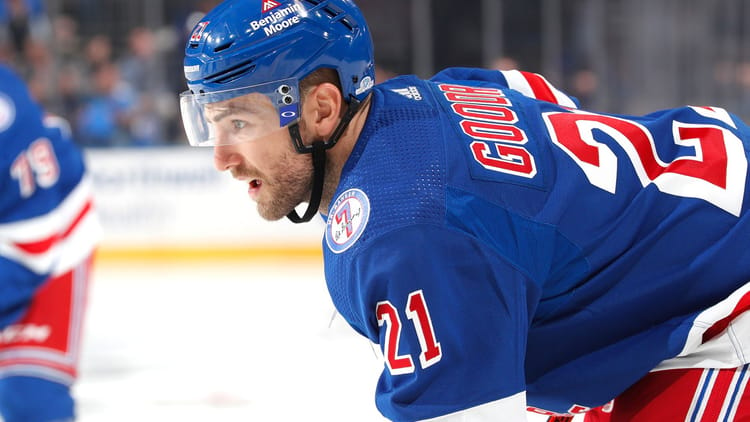
It’s time we address the other elephant in the room. There comes a time when the benefits of a personality in the locker room are no longer outweighing performance on the ice. We saw it with Ryan Reaves. It happened with Nick Bonino. Now, it’s time we start a Barclay Goodrow rotation and address this final concern about the fourth line.
Mind you, this is not a shot at Goodrow or his contract. The contract is on Chris Drury, and I think we all knew that wasn’t a good contract even if it came with a manageable cap hit. Goodrow is also a warrior on the ice who sacrifices a lot for the betterment of the team. However we may have hit that point where he is still a warrior, but the performance isn’t making the team better.
Beginning with the required caveat of a Goodrow rotation: Injuries this year have certainly played a role, and we still have no idea what part of his jaw he spit out in November. He has also been asked to play up in the lineup this season with little success. His leadership in the room shouldn’t be ignored, but like Reaves, it needs to serve the team on the ice.
A Goodrow rotation is about his 5v5 play
As per usual, a chart does not tell a whole story, but in this particular case it does mirror what many of us see on the ice. Goorow is a warrior, but an ineffective and slow warrior. We also need to remember role, which is a shutdown role. On the left chart he is compared to Tyler Pitlick, who played a very similar role to Goodrow. It’s not perfect, but it’s as close as apples to apples we can get.
In a shutdown role the defensive metrics are weighted more for me, and the stark contract between Goodrow and Pitlick catches my eye. Pitlick was as close to league average as you can get, while Goodrow is far below and is a net-negative on the ice at 5v5. Based on that one observation, the case for a Goodrow rotation on the fourth line is made.
The chart on the right gives us some insight into his penalty killing value, which is the only net-positive aspect to his game right now. It’s an important aspect on the ice and a valid counterargument to the Goodrow rotation idea. The question then shifts to the value of those minutes.
Is the 1:54 TOI/GP shorthanded worth the significant net negative of 10:30 TOI at 5v5? What about when it’s coupled with the leadership aspect? It’s tough for us, as fans, to objectively judge that.
What options are there?
The Rangers have a few options if they implement a Goodrow rotation, and some may actually be halfway decent ideas. They are limited with recent roster moves, specifically waiving Pitlick, but ideally Goodrow is on a 4RW rotation with Adam Edstrom. In this scenario, the Rangers either acquire a 4C as a direct replacement, or they acquire a 3C and move Jonny Brodzinski to 4C.
This option seems the most plausible if a Goodrow rotation is implemented. The Rangers appear to be in the market for a center, but the role of the center is in question with Brodzinski’s emergence.
Another option relies on either Edstrom or Pitlick sticking as the 4RW and a Goodrow rotation at center with a new 4C acquisition. This seems less ideal, as Goodrow’s diminishing skill set (age/style of play) isn’t exploited as much on the wing. The fact that he’s playing center is a problem that needs fixing, and this doesn’t necessarily do that.
The last option, and the least likely to happen, is to scratch a Goodrow rotation altogether and simply scratch him or trade him. Let’s be real, neither are happening this season.
Luckily for Goodrow, Mika Zibanejad’s struggles and the need for a 1RW have overshadowed this elephant in the room. At least publicly. There is a need for a Goodrow rotation if the Rangers are to optimize the lineup for the playoffs. It’s not fun to say or hear, but the results are simply a drag on the positives he brings.
Share:


